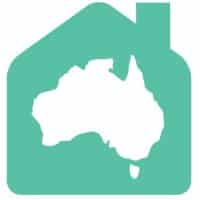Property Data providers are not affiliated with Stash Property. Please use as a guide only
Stash for Investors & Developers
Ultimate Guide to Data Providers for Property Investors in Australia
The team behind Stash have been involved in the property data industry since 2001. We have lived and breathed property data having built one of the cornerstones of the property data industry in Pricefinder. Here we take a deep dive into the new landscape of property data providers in 2024.
- Where to invest?
- Find Development Sites
- Find Properties For Sale
- Find who owns a property
- Suburb Statistics
- Economic Indicators
Identify investment ready suburbs
Looking to invest and unsure where to begin? Explore these expert providers who specialise in analysing suburb-level data to help you identify the perfect investment opportunity. These tools are essential for both novice and seasoned investors, providing a clear, data-backed pathway to finding investment-ready suburbs that suit your specific needs and strategies. Perfect for investors & buyers agents.

Boomscore

Dashdot

DSR Data

HTAG Analytics

Microburbs

Picki

Realestate Investar

SQM Research
Stash Property

Suburbs Finder
Searching for development opportunities?
These expert platforms offer tools to help you locate prime development sites, including splitter blocks, corner lots, and properties with zoning potential. With access to zoning data, overlays, and planning permits, these tools make it easier to discover off-market properties and sites ready for development. Whether you're a seasoned developer or a first-time investor, these platforms provide the insights you need to find your next project.

Archistar

Corelogic (RP Data)

Landchecker

National Property Data

Pricefinder
Stash Property
Looking to buy an investment property?
These expert providers offer tools to help you search on market properties across Australia. Whether you’re looking for a renovator, a development site, or a high-yield rental property, these platforms provide the data and insights to help you find the perfect investment opportunity. With some data providers, you can quickly identify properties that align with your investment strategy.

Corelogic (RP Data)

Dashdot

Domain

Homely.com.au

National Property Data

Picki

Pricefinder

Property.com.au

Realestate.com.au

Realestate Investar
Stash Property

View.com.au
Property Data providers are not affiliated with Stash Property. Please use as a guide only
Looking to discover property ownership details?
These platforms provide tools to help you identify property owners and access title deeds, ownership history, and contact information. Whether you're seeking to connect with a property owner for a potential purchase or development, these services simplify the process by offering direct access to ownership records. Ideal for investors, developers, and buyers agents looking to approach property owners with targeted opportunities.

Corelogic (RP Data)

National Property Data

Pricefinder
Stash Property
Property Data providers are not affiliated with Stash Property. Please use as a guide only
Want to make informed investment decisions?
These platforms offer detailed suburb statistics, including demographics, rental yields, vacancy rates, and capital growth trends. With access to crucial data points like population growth, local amenities, and market activity, these tools help you assess the potential of different areas. Whether you're comparing suburbs for investment or looking to understand market dynamics, these platforms provide the insights needed to choose the best location for your property investment strategy.

Boomscore

Corelogic (RP Data)

Dashdot

Domain

DSR Data

Homely.com.au

HTAG Analytics

Microburbs

National Property Data

Picki

Pricefinder

Property.com.au

Realestate.com.au

Realestate Investar

SQM Research
Stash Property

Suburbs Finder

Suburbs Trends

View.com.au
Property Data providers are not affiliated with Stash Property. Please use as a guide only
Stay ahead of the market!
These platforms provide insights into factors such as interest rates, inflation, employment trends, and housing supply, all of which impact property values and rental demand. By understanding these economic drivers, you can better predict market shifts and make informed decisions on where and when to invest. Ideal for investors seeking a broader view of the economic landscape affecting the property market.

Dwelling Approvals

Economic Growth

Interest Rates

Labour Force

Lending Indicators

Population Growth
Property Data providers are not affiliated with Stash Property. Please use as a guide only
Not yet a member? Try Stash free today
Disclaimer: This is an opinion-based analysis and is intended to be used as a guide only. The property data providers mentioned are not affiliated with Stash Property. Please conduct your own research and due diligence before making any property investment decisions. If you notice any mistakes or corrections, please reach out to us.


